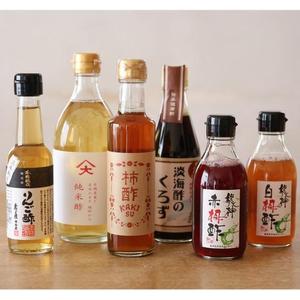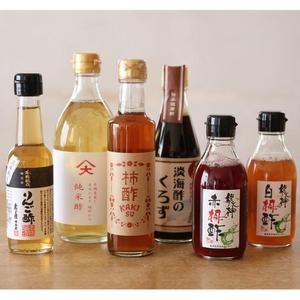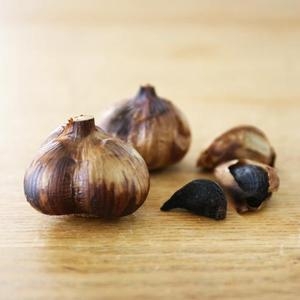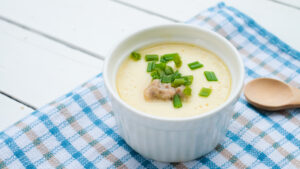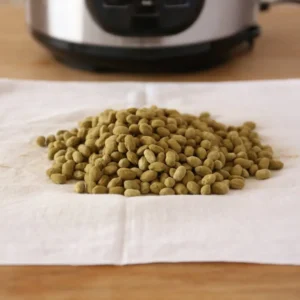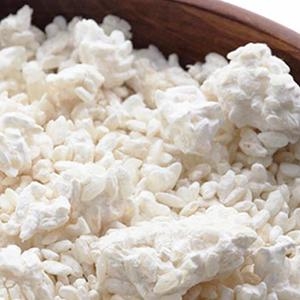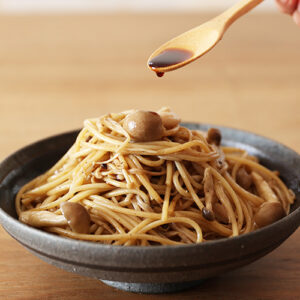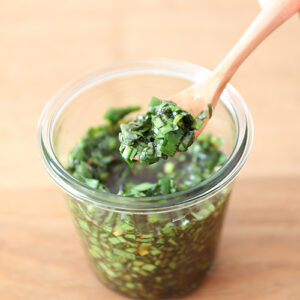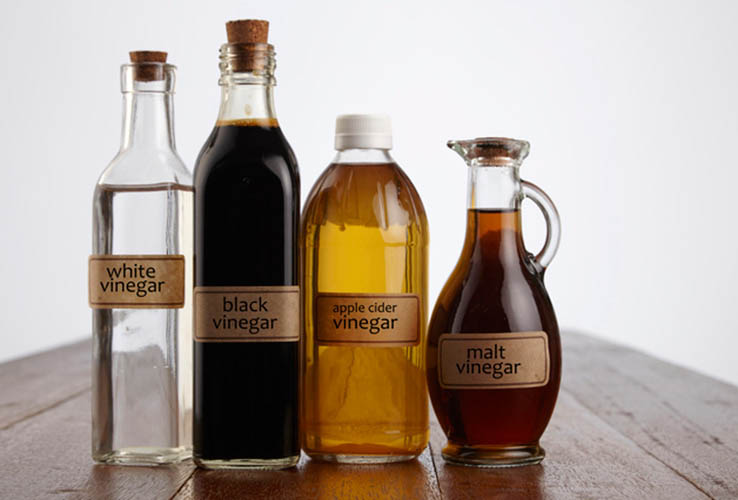
Maybe you want to broaden your knowledge about cooking seasoning or condiments. Or maybe you just learned about vinegar but don’t really know how to distinguish each of them, or what could they do in cooking.
Or maybe you don’t really care, because you simply like eating or cooking using vinegar.
Whatever the reasons are, thank you for finding this article!
Having the right vinegar for the right situation will leave you a remarkable dish, which is why learning types of vinegar will be our final objective in this article.
Let’s compare different types of vinegar, and check the recipe ideas using rice vinegar later in this article, too.
 Content List
Content List
- What is Rice Vinegar?
- Let’s Compare the Types of Vinegar! ~ Shortcut to Knowing Different Kinds of Vinegar Similar to Rice Vinegar
- 1. Rice Vinegar vs Rice Wine Vinegar
- 2. Rice Vinegar vs White Vinegar
- 3. Rice Vinegar vs Apple Cider Vinegar
- 4. Rice Vinegar vs Grain Vinegar
- 5. Rice Vinegar vs Chinese Rice Vinegar
- 6. Rice Vinegar vs Seasoned Rice Vinegar
- What is the Vinegar for Sushi Rice?
- How to Use Rice Vinegar – Rice Vinegar Recipes
- Rice Vinegar Q & A
- Recommended Products of Rice Vinegar
What is Rice Vinegar?
Knowing “what is rice vinegar?” will be our first goal in this article.
You can find many types of vinegar in Japan, as it is one of their indispensable everyday seasoning condiment. When Japan also has fruity vinegar (such as plum and persimmon vinegar), the most popular types of vinegar are their rice vinegar.
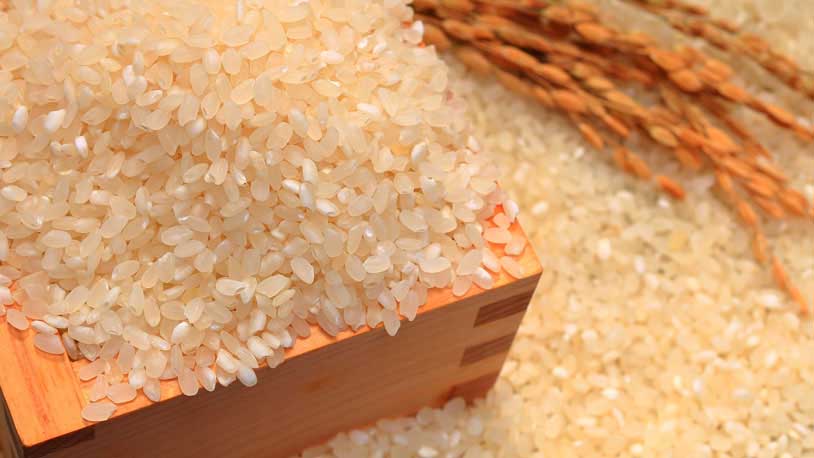
Rice vinegar (米酢, komezu) is an almost colorless Japanese rice vinegar, used in a variety of Japanese dishes, such as sushi rice, sunomono (Japanese vinegar dishes), tsukemono (Japanese pickles), and nimono (Japanese simmered dish). It has around 5% acetic acid content, pretty mild for an acid in vinegar.
Rice vinegar has a mild flavor and slightly sweeter if compared with Western vinegar.
Therefore it also works well for salad dressings and dipping sauces.
As you can guess, rice vinegar is made from rice, fermented rice or rice koji, and water.
Find more informations about rice vinegar, its substitute, and its benefits in our article below!
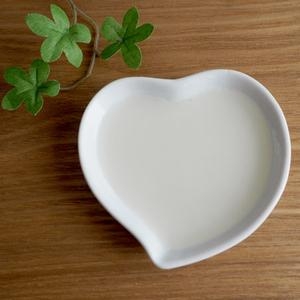
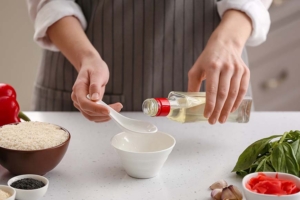

Other types of Japanese vinegar also made using rice or ingredients from the rice itself.
For instance, red rice vinegar (akazu) also has the same ‘rice vinegar’ name, and black vinegar (kurozu) also made from rice. But how is it different from rice vinegar?
What is Japanese Red Rice Vinegar (Akazu)?
Red rice vinegar (赤酢, akazu), or also known as sake lees vinegar (粕酢, kasuzu) is one major type of rice vinegar that is made from sake kasu (sake lees).
It has reddish color, therefore called as red rice vinegar.
Sake kasu is the residue from sake fermentation process. It is the mixture of steamed rice and koji in a white, solid form that did not or could not be fermented during the moromi process.
The Edomae Sushi, or the traditional sushi that was invented around the 1800s, is using akazu. The reason is that rice vinegar is expensive during that time, while akazu is cheaper and delicious nonetheless.
Red rice vinegar or sake lees vinegar is known for its characteristics, such as:
• Has a milder acidity than the rice vinegar.
• Stronger umami flavor.
• The longer the brewing/fermentation process, the vinegar color will become darker (reddish color), thus called as red rice vinegar.
• Sushi chef may use akazu for making sushi. Or using the mix of akazu and rice vinegar.
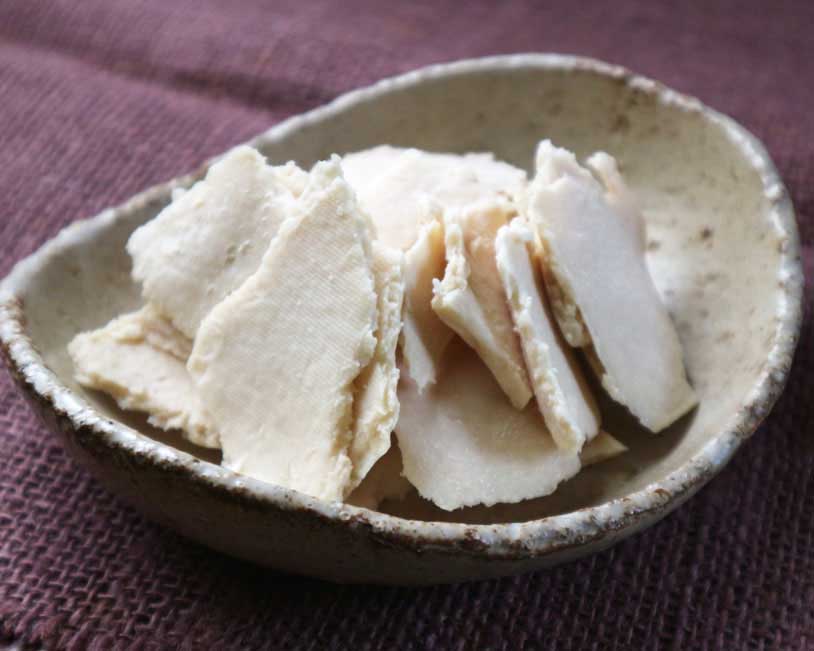
What is Japanese Black Vinegar (Kurozu)?
Japanese black vinegar (黒酢, kurozu) also one of the vinegar that have a long history in Japan. Black vinegar is made with the traditional method and aged for 1-3 years (or depends on the manufacturer).
Generally, black vinegar is made with brown rice or the rice that hasn’t been polished. However, sometimes it is also made by the mixture of barley and wheat. Because of its long-brewing/fermentation process, it got its deep burn caramel-like color, thus called as black vinegar.
Black vinegar is characterized by its mellow, less sour taste. It also has an abundant amount of amino acid if compared to normal rice vinegar, thus esteemed as a healthy drink.
15 to 30cc is enough for the daily intake of black vinegar.
For the consumption tips: please dilute it with water or incorporate it in cooking recipes instead of directly drink it. The acid contained in black vinegar may upset your stomach if drunk as it is.
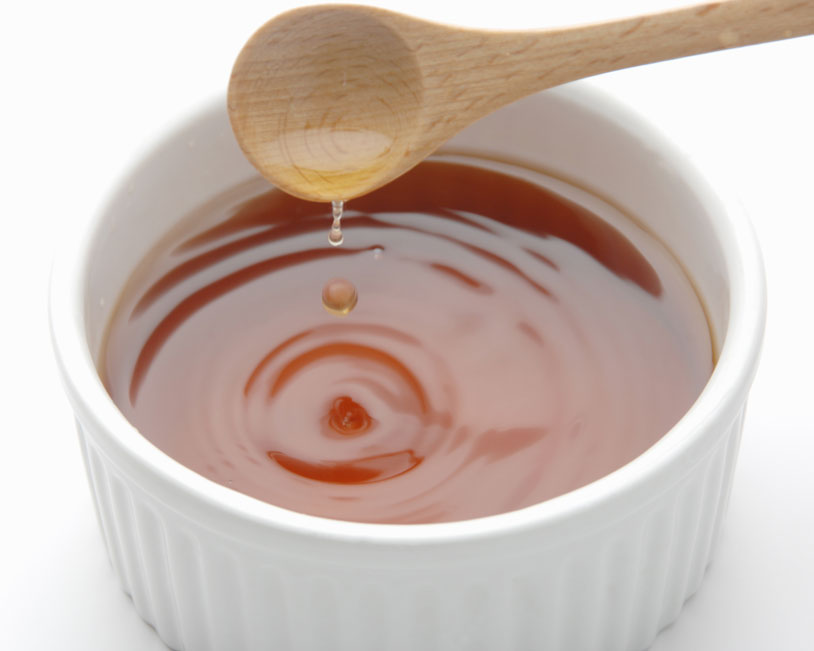
Recommended Pure Rice Vinegar Products
Let’s Compare the Types of Vinegar! ~ Shortcut to Knowing Different Kinds of Vinegar Similar to Rice Vinegar

The second goal in this article is to “compare the kinds of vinegar similar to rice vinegar”.
Having the right vinegar for the right situation will leave you a remarkable dish, so let’s know its profiles and differences.
In this article, we have summarized the information from 6 kinds of vinegar similar to rice vinegar. Let’s compare each of them!
1. Rice Vinegar vs Rice Wine Vinegar

Rice Vinegar (left) and Rice Wine/Sake (right)
There’s often confusion about “rice vinegar” and “rice wine vinegar”.
The main questions are whether they’re interchangeable, and what the difference is.
Rice vinegar and rice wine vinegar are the same thing.
So it’s the only a matter of difference in the wording on the label.
But, if what you’re confusing is the difference between “rice wine” and “rice vinegar”, then they are completely different.
First, rice wine is an alcoholic seasoning, or drink or liquor made from rice, just like wine is made from grape. Most common example of rice wine are sake and mirin.
Find article about Sake and Mirin below!
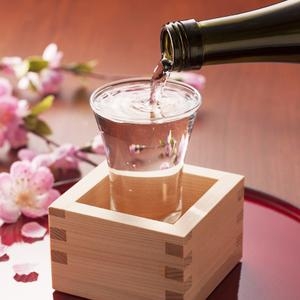
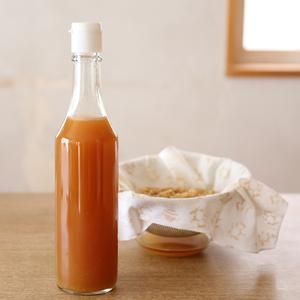
And rice vinegar, is an acid vinegar made from rice just like I am explaining in this article.
So the conclusions are:
Rice vinegar → a seasoning, a vinegar made from rice, rice koji/koji rice, and water.
Rice wine vinegar → a vinegar, just different term of rice vinegar.
Rice wine → alcoholic drink and seasoning made from rice and koji rice. The examples are sake and mirin.
2. Rice Vinegar vs White Vinegar
White vinegar (or also called as distilled white vinegar) is the very common type of vinegar that is produced by the fermentation of distilled grain alcohol, sugar cane, corn, etc. White vinegar is inexpensive, and you can easily find it anywhere.
This type of vinegar is suitable for cooking, baking, pickling, laboratory use, and cleaning purposes.
It has a white, clear color. The taste is strong and clean compared to rice vinegar.
White vinegar consists of 5-10% acetic acid and 90-95% water. Some white vinegar with up to 20% acetic acid is only suitable for cleaning, so please don’t use it for consumption.
Now the common question: Can you substitute white vinegar for rice vinegar?
Well, no. Because rice vinegar tends to have a higher acid than rice vinegar. You may want to use white vinegar for making Western cuisines. While using rice vinegar for making Eastern cuisine.
3. Rice Vinegar vs Apple Cider Vinegar
Apple cider vinegar (ACV) comes from crushed apples that have undergone fermentation.
Apple vinegar has a moderate acidity similar to rice vinegar that is 5-6% acetic acid. The color of this vinegar is yellowish to orange, amber color.
This type of vinegar is the best substitute for rice vinegar, as it has a mild, slightly sweet flavor and has a hint of apple notes in it.
Read more about the substitute for rice vinegar here:

4. Rice Vinegar vs Grain Vinegar
Grain vinegar (穀物酢, kokumotsu-su) is the commonly brewed vinegar in Japan made from grains (rice, wheat, sake lees, corn, etc.) The price is reasonable and characterized by the refreshing, moderate acidity and a slight vinegar scent.
You can easily find grain vinegar in Japan, as it is widely used for daily cooking.
Grain vinegar has similar uses to rice vinegar. It is suitable for cooking, pickling, topping, and as a salad dressing. Some recipes like simmered dishes also advise combining grain vinegar and rice vinegar.
Then, what is the difference between grain vinegar and malt vinegar?
Malt vinegar is vinegar made from germinated grain (barley, wheat, corn, etc.) converted them into sugars, then aged for several months to develop the taste of vinegar.
It is characterized by a unique flavor and scent similar to beer, and 4-5% acidity. Several types of malt vinegar include distilled, light, and dark malt vinegar.
5. Rice Vinegar vs Chinese Rice Vinegar
Chinese rice vinegar or Chinese black vinegar is a vinegar made from fermenting glutinous rice (and sometimes mixed with barley or wheat) and it is produced with the traditional Chinese vinegar production method.
The acidity of Chinese rice vinegar is similar to Japanese rice vinegar, but with a darker color. This vinegar is very suitable for cooking and seasoning.
It has a strong taste than Japanese rice vinegar, with a smoky and a hint of umami. Because of its unique flavor, Chinese rice vinegar is not suitable to substitute with any Western vinegar.
6. Rice Vinegar vs Seasoned Rice Vinegar
Seasoned rice vinegar (合わせ酢, awasezu) is a type of rice vinegar that contains additional sugar, salt, corn syrup, and often flavor enhancers to make it more flavorful and sweeter. This vinegar is also called sushi vinegar.
Because it has additional ingredients, seasoned rice vinegar has more calorie, carbs, and sodium than the unseasoned rice vinegar. If you are planning to use rice vinegar for many purposes, we recommend using unseasoned rice vinegar.
Some manufacturer sells seasoned rice vinegar, meaning you can use it directly to make sushi rice. How to make sushi rice using seasoned rice vinegar? Scroll more to get the answer.
What is the Vinegar for Sushi Rice?
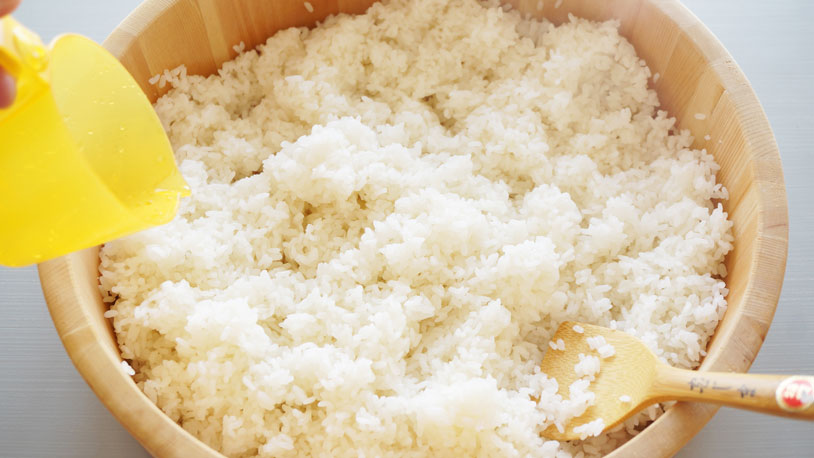
Seasoned rice vinegar or sushi vinegar, is usually used to make sushi rice by Japanese households to sushi restaurants. The seasoned rice vinegar is ready-to-use vinegar for sushi rice.
But, you can also use unseasoned rice vinegar to make sushi rice. All you need to do is to pre-mix it with sugar and salt in a saucepan with medium heat until dissolved.
Alternatively, you can also use red rice vinegar (akazu). When using akazu, you don’t have to add sugar because it is naturally sweet. Akazu could give beautiful color to the sushi rice.
To feel the authentic Japanese standard taste of sushi, let’s use only short-grain Japanese white rice. With these ingredients, you can make sushi dishes, such as hand-rolled sushi, chirashizushi, inari sushi, etc.
How much Rice Vinegar for Making Sushi Rice?
If you are using seasoned rice vinegar for sushi rice:
2 go (approximately 322 grams) of Uncooked rice
4 tbsp of Seasoned rice vinegar
If you are using unseasoned rice vinegar for sushi rice:
3 go (approximately 484 grams)of Uncooked rice
4 tbsp of Unseasoned rice vinegar
4-5 tbsp of Sugar
2 tsp of Salt
How to Use Rice Vinegar – Rice Vinegar Recipes
You can enjoy rice vinegar by drinking it or incorporate it with food recipes.
Drinking or consuming rice vinegar also give a lot of health benefits, which was explained in our previous article below. Please try to consume rice vinegar if you’re interested!

How can I Drink Rice Vinegar?
You can drink rice vinegar after you diluted it with water or some drink.
If you don’t dilute it, you can get a painful burn in your throat because of its acidity.
For health reasons, I used to drink 1 tablespoon of apple cider vinegar diluted in one cup of warm mineral water every morning. Sometimes if the taste is still too strong, I added 1 tablespoon of honey. It goes the same way for rice vinegar.
【ONE WARNING FOR PEOPLE WHO DRINK VINEGAR】
After you drink vinegar, be sure to rinse your mouth with water!
Vinegar contains a component called “acetic acid”, and if acetic acid remains in the mouth, it may damage the tooth enamel. This caution only applied when drinking vinegar.
Rice Vinegar Recipes
This article has 4 recipes using rice vinegar for your references. Choose your favorite:
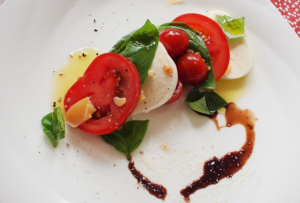
Rice Vinegar Dressing
Ingredients
- 2 tbsp Rice Vinegar
- 1 tbsp Oil (salad oil)
- 1/4 tbsp Salt
- 1 tbsp Sugar
- 2 tsp Soy sauce
Instructions
- Mix rice vinegar, oil and soy sauce.
- Add salt and sugar, melt together, and it is completed.
- Pour the rice vinegar dressing on your favorite salad and dishes!
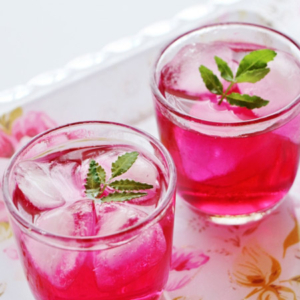
Red Shiso Juice (with Organic Rice Vinegar and Black Sugar)
Ingredients
- 400 g Red shiso leaves (red perilla leaves)
- 250 ml Organic rice vinegar
- 1 cup Black sugar
- 1.5 litre Water
Instructions
- Cut the stem of the shiso and take only the leaves, wash them repeatedly with clean water and then drain the water.
- Put approx. 1.5 L of water in a pot made from other than aluminum, then boil the water.
- Add 1 cup of organic rice vinegar in the pot, then add red shiso, and boil them for about 5 minutes.
- Take the red shiso leaves. Put it in a strainer, then squeeze it with chopsticks, ladle, etc., but do not touch with hand.
- Add a cup of black sugar in the pot and reboil it, skim off the scum (froth or foam that floats on the surface of liquid) if there are any.
- If you see the heat (steam-like air) coming, take the bottle to store the juice.
- Disinfect the bottle by spreading a small amount of rice vinegar to the inner lid and spout.
- When it cools down, keep it refrigerated.
- You can drink it immediately as it is. But if the concentration is too thick for you, you can add water and ice.
Notes
- Because this is using vinegar, do not use aluminum pot. Since vinegar is added in from the beginning, the red colour will remain beautifully even if the shiso leaves are taken from the water.
- Because of if you use ordinary vinegar or citric acid, and white sugar, the juice won't turn out nicely, please use organic rice vinegar and black sugar.
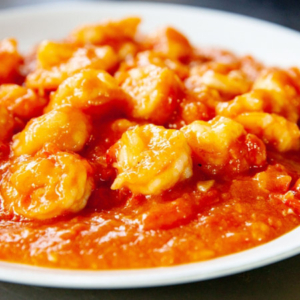
Shrimp Relish
Ingredients
- 125 ml Peanut oil
- 15 cloves Garlic finely chopped (minced)
- 5 pieces Bird's eye chillies
- ½ inch Dried shrimp paste (blachen) (or 1 cm)
- 250 g Dried prawns (shrimp)
- 125 ml sesame oil
- 50 g Chopped driedspring onions (scallions)
- 125 ml Red rice vinegar you can use the white one too
- 2 teaspoon Thai or Vietnamese fish sauce
Instructions
- Heat the peanut oil and stir-fry the garlic, chili, and shrimp paste until the garlic softens. Then allow to cool. Combine the dried prawns with the sesame oil.
- Stir the dried spring onions and the chili-and-garlic mixture. Add the vinegar and fish sauce.
- Seal in an airtight jar. Serve as an accompaniment to savoury dishes.
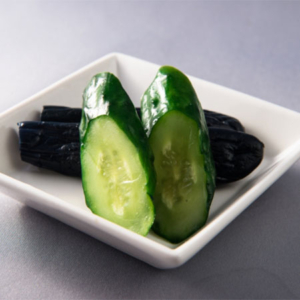
Lightly Pickled Cucumber and Eggplant
Ingredients
- 1 piece Cucumber
- 1 piece Eggplant
- ½ piece Red chili pepper
- ½ teaspoon Sesame Oil
- 3 tbsp Soup stock
- 1 tbsp Rice vinegar
Instructions
- Cut the cucumber and eggplant in one-bite size.
- Put cucumbers and all seasoning in plastic bags, tie the plastic's mouth so that the air in vinyl can escape, and pickle them for 15 to 30 minutes.
- When they had pickled, then it's complete. This is a simple and convenient recipe when you want to eat pickled cucumber and eggplant easily.
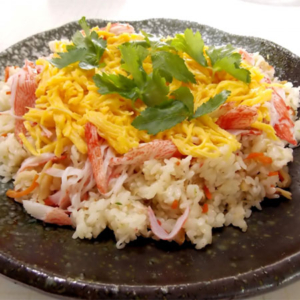
Chirashi Sushi
Ingredients
Mixed vinegar ingredients
- 450 g Rice
- 4 tbsp Rice vinegar
- 4 tbsp Sugar
- 2 teaspoons Salt
Ingredients
- Crab Proper amount, to your liking
- 2 tbsp Salmon roe dipped in soy souce/shoyu
- 2 Eggs
- Mitsuba (Parsley; East Asian wildparsley) Proper amount, to your liking
Instructions
- When the rice is finished cooked, mix the "mixed vinegar ingredients" and make sushi rice.
- Cut the crab into one-bite sized pieces.
- Cook the eggs, cut them into small pieces resemble string.
- Mix the "ingredients" with "mixed vinegar ingedients". When they are all mixed, then it's complete.
- Enjoy your chirashizushi by yourself, with families, or with your beloved ones!
Notes
Rice Vinegar Q & A
- What are the kinds of Japanese rice vinegar?
- Rice vinegar (komezu) → vinegar made from rice, fermented rice, and water.
Red rice vinegar (akazu)→ also called as sake lees vinegar (kasuzu), a vinegar made from sake kasu (sake lees).
Black vinegar (kurozu) → vinegar made from brown rice, sometimes it also made by the mixture of barley and wheat.
- Is rice vinegar the same as rice wine? and what about rice wine vinegar?
- No, they are a different thing. To make it simple, here are their differences:
Rice vinegar → a seasoning, a vinegar made from rice, rice koji/koji rice, and water.
Rice wine vinegar → a vinegar, just different term of rice vinegar.
Rice wine → alcoholic drink and seasoning made from rice and koji rice. The examples are sake and mirin.To read more, go to this section.
- What is the difference between rice vinegar and white vinegar?
- White vinegar or distilled white vinegar is a vinegar produced by the fermentation of distilled grain alcohol, sugar cane, corn, etc. It has a strong flavor and consists of 5-10% acetic acid. White vinegar is not recommended for rice vinegar substitute.
- Seasoned vs unseasoned rice vinegar?
- Seasoned rice vinegar → rice vinegar that contains additional sugar, salt, corn syrup, and often flavor enhancers. The ready-to-use vinegar for sushi rice.
Unseasoned rice vinegar → the pure rice vinegar, without additional sugar or salt. If used for sushi rice, plese pre-mix it with sugar and salt in a saucepan.

